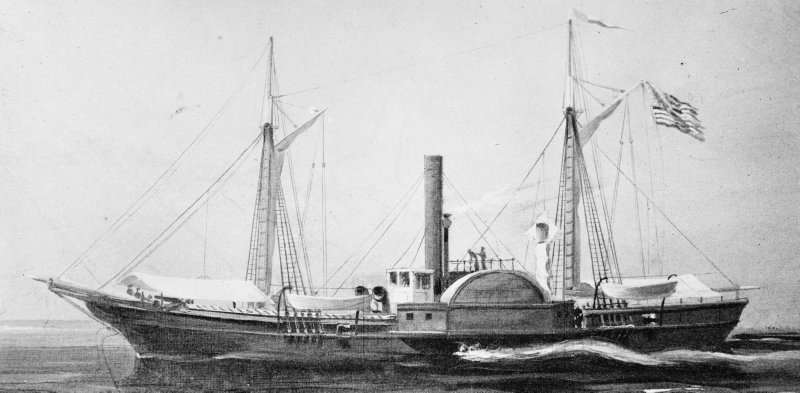 As it happens so often, the third time was the charm. The third iteration of the USS Water Witch had the success that eluded the previous two boats that shared its name – and some of the machinery.
As it happens so often, the third time was the charm. The third iteration of the USS Water Witch had the success that eluded the previous two boats that shared its name – and some of the machinery.
A few months after the Tesuque Pueblos had watched the hulk of the previous Water Witch being battered, the new version was finished. In early December of 1852, John P. Kennedy, the Secretary of the Navy, wrote that the steamer was ready for its next expedition, as part of the La Plata river exploration. On December 30, Kennedy actually boarded the ship and was taken on a tour of the Potomac, during which it was determined that the Water Witch was now the fastest boat in the Navy.
The following month, the Water Witch left the Navy Yard and proceeded to Baltimore, where it was crewed. Under the direction of Captain Thomas Jefferson Page, it then set out for South America, and the La Plata River, as well as the rivers that flow into this enormous bay. For the next three years, the crew stopped every few days to pick up new plants; eventually, they sent four bales of specimen to the Smithsonian.
The expedition was not all fun and games, with the members finding themselves under attack from the Paraguayan military, forcing them to stop their exploration of the Río Paraná. Nonetheless, the trip was generally considered a great success, especially in improved relations with several of the countries.
Water Witch returned to the Navy Yard, and used for general duties, including ferrying ex-Navy Secretaries to new posts. In 1858 the Navy sent the Water Witch and other boats, up the Río Paraná, and forced the Paraguayans to apologize, and to pay for the death they had caused earlier. With this piece of unfinished business taken care of, Water Witch returned to her previous task of exploring the area, and only returned to the United States in late 1860, being decommissioned in Philadelphia in November of that year.
It will come as no surprise that she was speedily recommissioned with the outbreak of the Civil War, and – as one of the faster boats in the Navy – used for blockade duty, first in the Gulf of Mexico, then after further repairs, along the Atlantic coast. During these operations she experienced the most violent episode of her life: her capture by the Confederate Navy.
While anchored in the mouth of the Ogeechee River, the order was given to capture her. Under the command of 1st Lieutenant Thomas Pelot, a crew of some 130 men in seven boats scoured the river for some four days before finally coming on the Water Witch. The ensuing battle was brief and furious, though only a handful of men were killed – including Pelot. In one of those tragically frequent coincidences that the Civil War engendered, he had been at Annapolis with his counterpart, the now-captured captain of the Water Witch, Lt. Commander Austin Prendergast.
And to add another level of irony, the command to capture the ship had been given by none other than William Hunter, whose drive system had originally almost completely failed to propel the ship.
While the Confederate Navy had some plans for the ship, they never came to fruition, and thus she sat, unused, not far from where she had been captured, outside Savannah Georgia, until General Sherman’s approach made her destruction advisable ending, finally, the life of a ship that had survived multiple near-death experiences.
Today, a full-scale replica of the Water Witch can be seen at the National Civil War Naval Museum, in Columbus Georgia.

